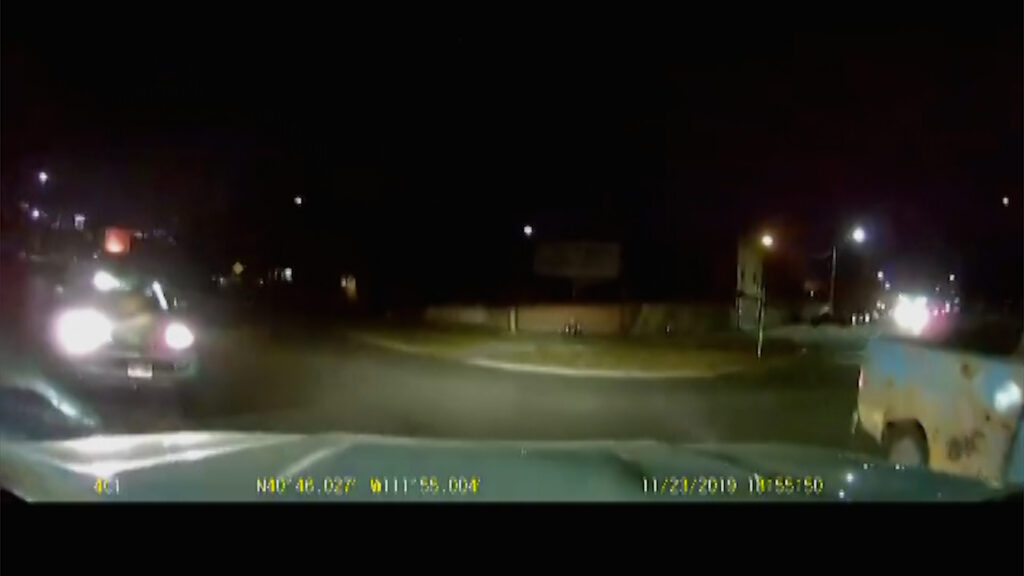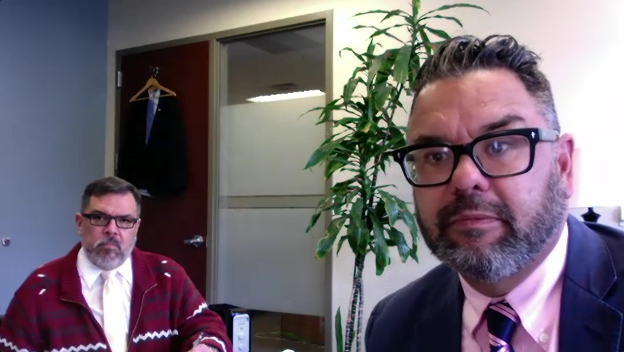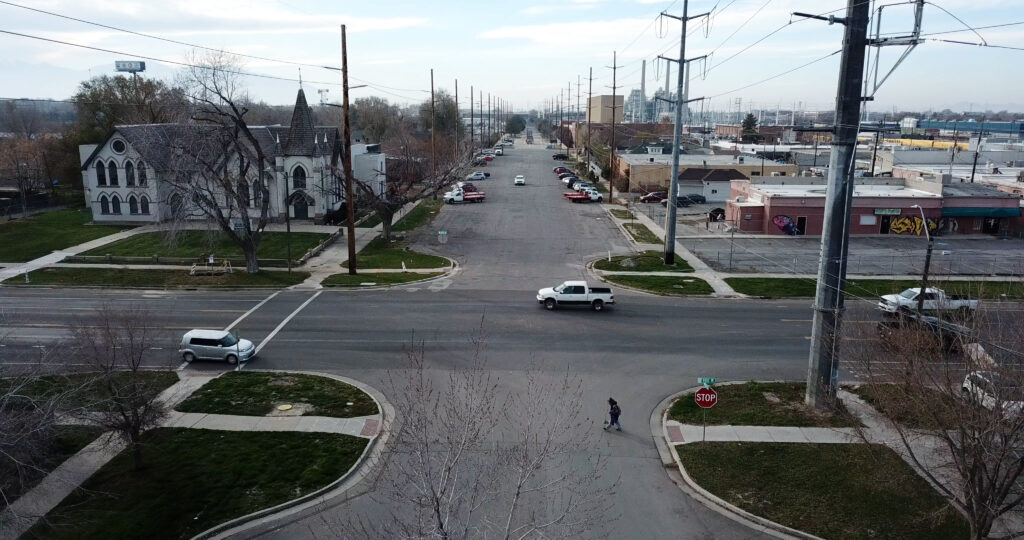BLUF:
After consideration of the arguments, the Utah Supreme Court agreed with the district court that Clara “presented evidence showing a reasonable belief that the snowplow posed an imminent threat of death or serious bodily injury to him and his passenger.”
Utah Supreme Court upholds prior ruling in first challenge of 2021 self-defense law
SALT LAKE CITY – The Utah Supreme Court sided with a man who fought felony firearm charges by claiming self-defense under a law that went into effect in 2021.
The case in question stems from a shooting in 2019. Jon Michael Clara fired several shots toward a truck with a snowplow that had repeatedly rammed into the SUV he was driving. One of the bullets flew through the cab of a nearby uninvolved vehicle, narrowly missing a child.
A blue truck with a snowplow rammed into an SUV multiple times, spinning it around to face oncoming traffic on Nov. 23, 2019.
Several charges against Clara were dismissed after he made use of a new self-defense law he urged lawmakers to pass. However, in an unusual move, the judge who presided over the case urged prosecutors to appeal his decision. In an opinion released Friday, Utah’s Supreme Court justices concluded that the district court “did not err” in its handling of Clara’s case.
Utah’s self-defense law
HB227 sailed through the Utah legislature in 2021. The law allows people who are charged with a crime and claim self-defense to have a justification hearing before the case goes to trial. If prosecutors cannot disprove a self-defense claim with clear and convincing evidence in that early hearing, the case is permanently dismissed.
That is what happened in Clara’s case in March 2022. Third District Judge Todd Shaughnessy ruled the state had not met its burden of proof, and despite evidence he said “troubles” him, he dismissed the case.
“This is one instance in which the state can appeal,” Shaughnessy said. “I would encourage the state to do that to seek some clarity on exactly what this new law means. But, as I say, I believe my hands are tied.”
The case is one of several the KSL Investigators followed after first reporting on the unintended consequences of the new law.
Utah Supreme Court arguments
During arguments before the Utah Supreme Court in May 2023, Assistant Attorney General Andrew Peterson argued Clara was not acting in self-defense, while defense attorney Ann Taliaferro argued Clara had acted reasonably given the circumstances.
Investigators never determined who was driving the truck, but Clara faced felony firearm charges for shooting at it. Clara said he saw brake lights and feared the driver was turning around to come after him and his passenger again.
“I was just aiming to let him know, if you come back this way, you know, you’re going to get shot,” Clara testified during his justification hearing in November 2021.
Jon Michael Clara (left) and defense attorney Clayton Simms (right) participate in a virtual hearing on March 4, 2022.
“I think this is like every other case that this court and the court of appeals have reviewed where somebody vindictively shot somebody in the back under a theory of, ‘I’m going to do him before he does me,’ or some species of that or based on previous threats,” Peterson said during oral arguments before the court last year. “Previous threats are never enough. This court’s case law is very clear about that.”
“The fact that he may have been shooting and he missed, or he was just shooting to warn them off or to stop the truck from coming back – I think that’s still absolutely justified,” countered Taliaferro.
Unintended consequences
In addition to questions about Clara’s case, some justices asked general questions about procedure under the new law and several questions about a scenario in which there is no witness to a murder, the suspect submits a claim of self-defense under the new law, but refuses to testify, which is within their Fifth Amendment right.
Justice Diana Hagen said that scenario represents a potential unintended consequence of HB227.
“I don’t know what the legislature intended,” Hagen said, “but it seems like this could be a consequence, whether intended or not.”
“I think that would make a great movie or crime novel,” Peterson said of the scenario, “I don’t think it’s likely to be a common problem.”
Justice Paige Petersen then shared that the facts in the hypothetical Utah scenario are those of a real case in Florida, challenged under the statute that Utah’s self-defense law is modeled after.
“We have that in Jefferson v. State in Florida,” Petersen said. “It’s the exact hypothetical I gave. The defendant gave a story about why he stabbed his roommate. The state had no evidence about what happened in the apartment. And so just based on his story, case dismissed.”
‘Extreme danger’
In its opinion affirming the lower court’s decision to dismiss the charges against Clara, the Utah Supreme Court addressed the stray bullet that endangered an uninvolved nearby family.
“In describing the facts of this case, the State emphasizes that Clara put a young girl and her family in extreme danger when he fired seven shots up 900 West. None of the bullets hit the snowplow that rammed Clara’s SUV. But one of the shots hit a pickup truck carrying three people who had nothing to do with the incident, and the bullet narrowly missed a young girl’s head. This was what drew police officers to the scene in the first place,” wrote Petersen, who authored the opinion.
The crash and subsequent shooting happened near 900 West and 100 South in Salt Lake County on Nov. 23, 2019. (Josh Szymanik)
The statement continued, “We agree that Clara’s stray bullet endangered the girl and her family. But these facts are not part of our analysis on appeal, not because they are not serious, but because the State has not raised an issue before us involving Clara’s endangerment of the three uninvolved passersby.”
Petersen wrote that the court’s opinion is not intended to minimize the seriousness of the family’s experience.
After consideration of the arguments, the Utah Supreme Court agreed with the district court that Clara “presented evidence showing a reasonable belief that the snowplow posed an imminent threat of death or serious bodily injury to him and his passenger.”




